#the very rich hours of the duke of berry
Explore tagged Tumblr posts
Text
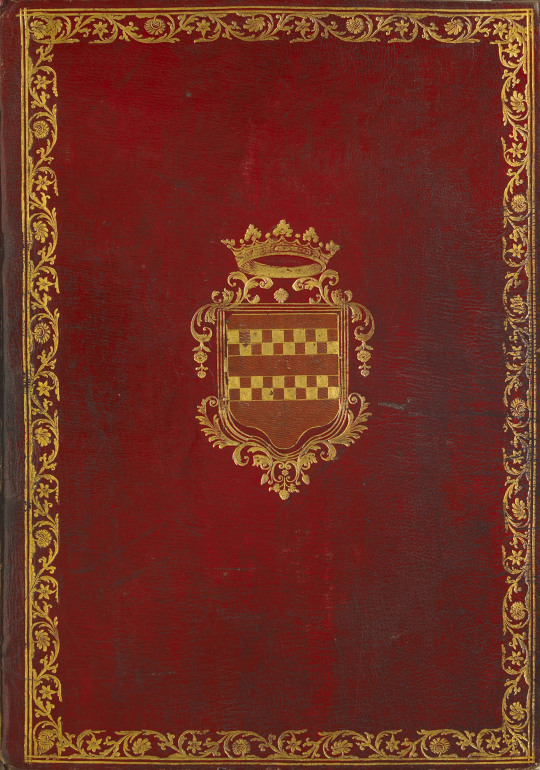
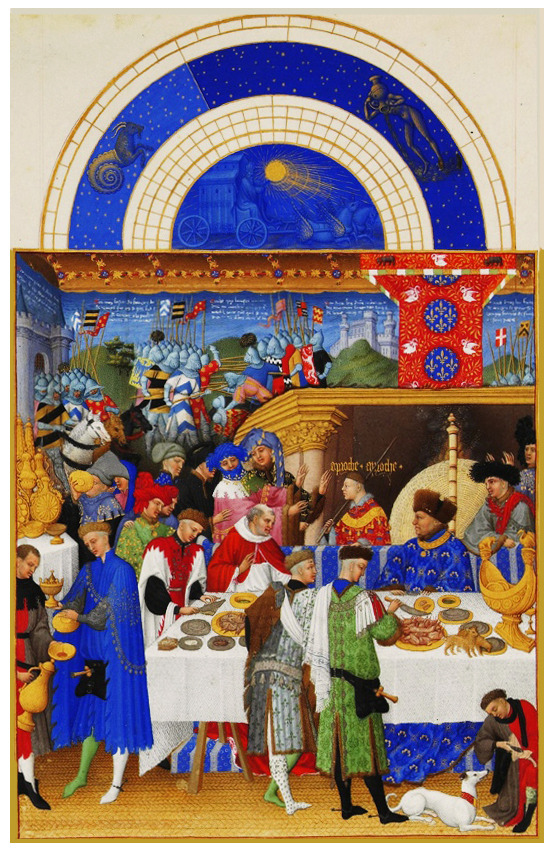


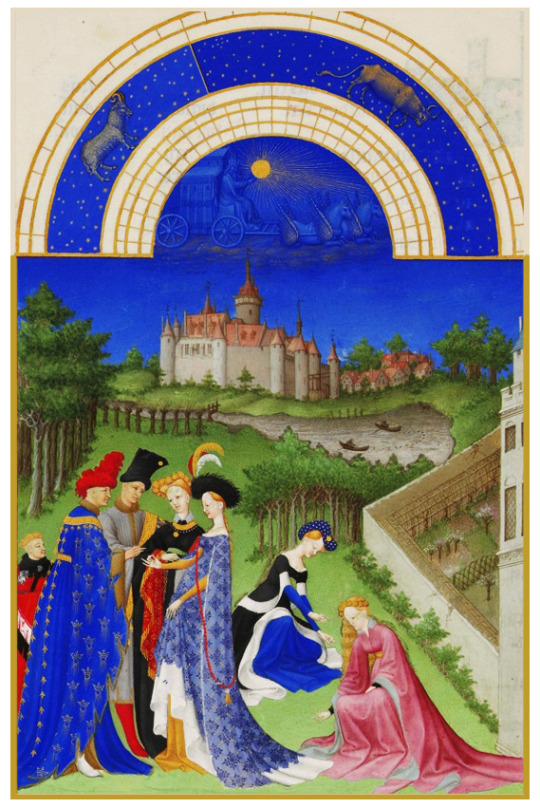
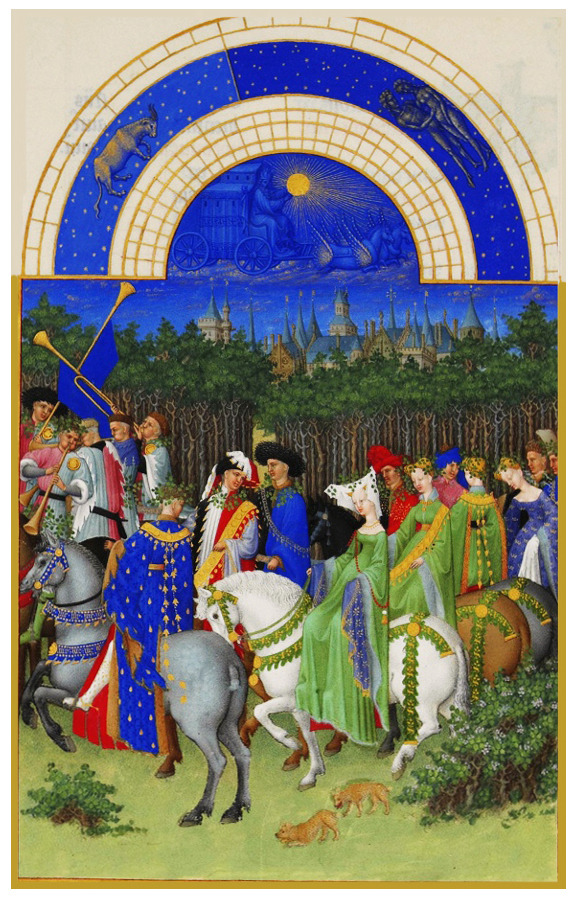

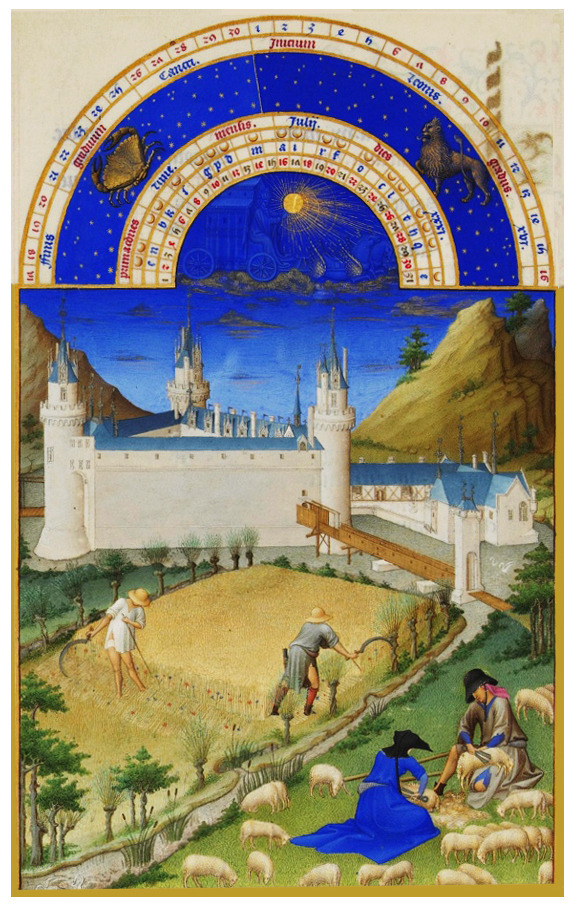

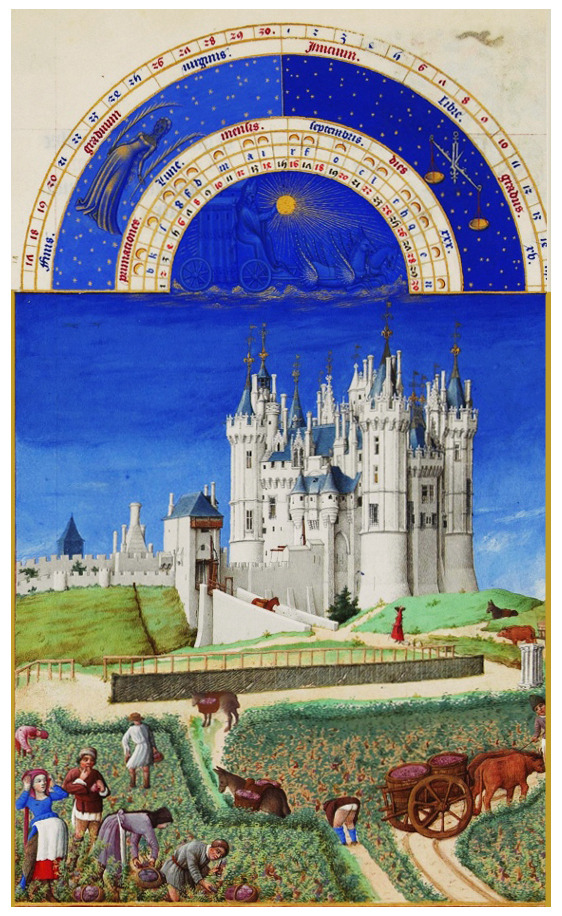
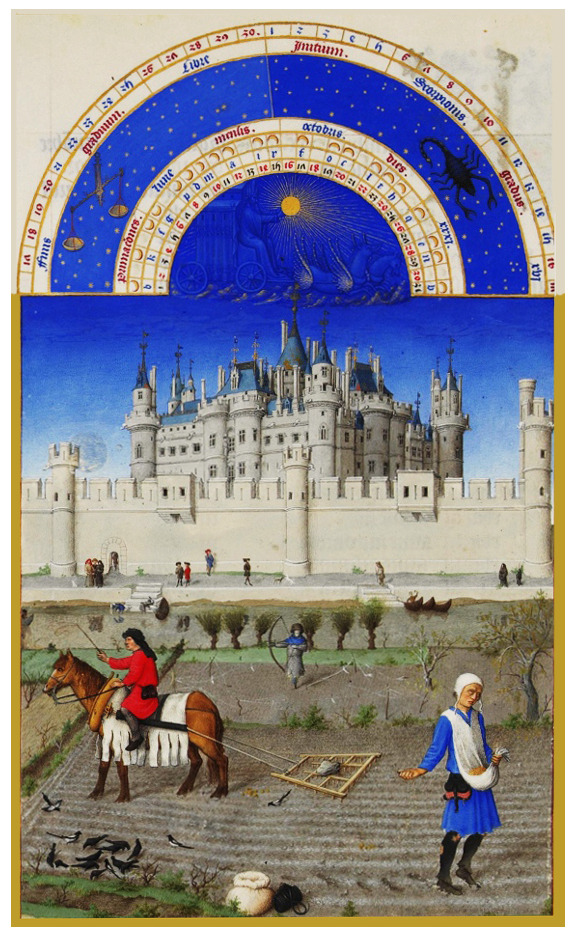

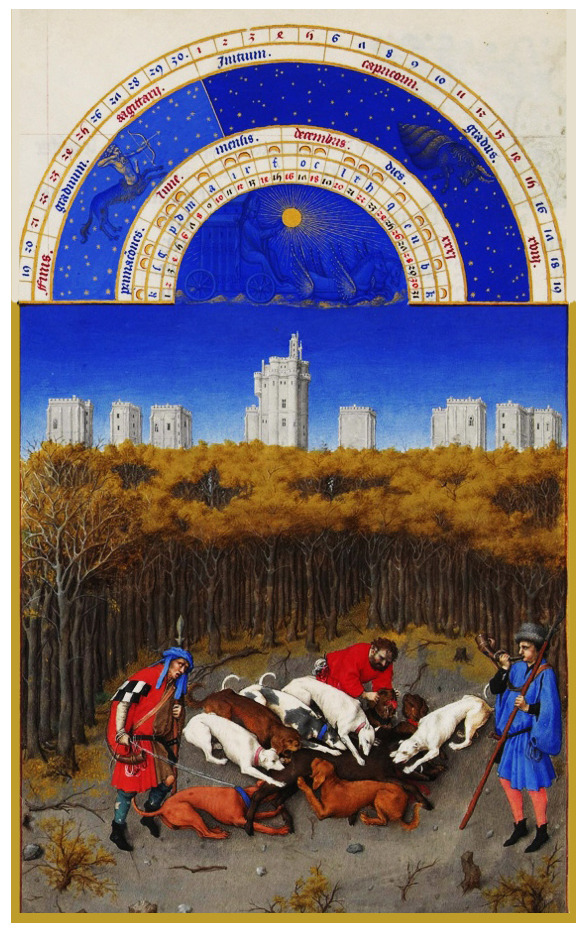
Limbourg Brothers and others - Labors of the 12 months in Tres Riches Heures du Duc de Berry. C. 1412-1416.
90 notes
·
View notes
Text
Illuminated Manuscripts

“Christ Kneeling in Prayer in the Garden of Gethsemene” (c. 1475 France, Loire Valley)
Illuminated manuscripts embody the extraordinary union of beauty and knowledge.
Though the art of making them disappeared with the advent of the printing press, the most spectacular manuscripts survived the ages.
Here are 8 masterworks of medieval illumination: 🧵
1. The Morgan Crusader Bible, 13th century

Commissioned by French King Louis IX, the Morgan Crusader Bible depicts events from the Hebrew Bible set in the scenery and attire of 13th-century France — it puts a medieval twist on Old Testament stories.
Consisting of 46 folios, the manuscript displays illustrations accompanied by text written in either Latin, Persian, Arabic, or Hebrew.
The vivid colors and attention to detail make it one of the most popular illuminated manuscripts.
2. The Black Hours, 15th century
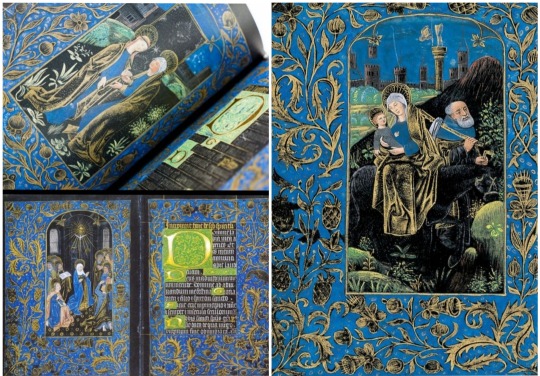
The Black Hours is a book of hours (a type of prayer book) created in Bruges, Belgium.
The style is in imitation of Wilhelm Vrelant, the most popular illuminator of the period and constructed of vellum (calfskin) that’s been dyed pitch black.
Gold and blue paint overlay the dark background to create an almost otherworldly look.
Written in silver and gold ink, the text lists the prayers to be said while depictions of Bible stories aid the reader in meditation.
3. Book of Kells, 9th century

Among the most iconic medieval manuscripts is the Book of Kells.
Created in a Columban monastery, the text is the pinnacle of early medieval calligraphy and illumination.
The graphics are a blend of insular art (the post-Roman era style of art popular in Irish monasteries) and traditional Christian iconography.
Plants, animals, Celtic knots, and biblical figures decorate the 680 page volume to tell the story of Jesus’ life.
4. Codex Argenteus, 6th century
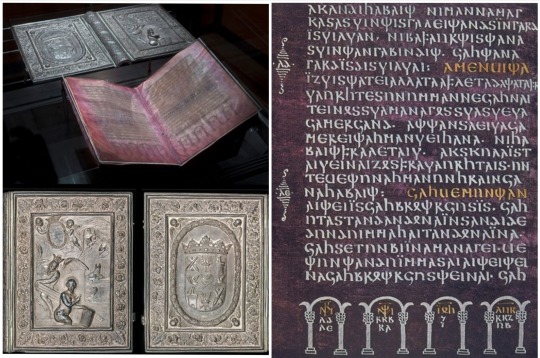
Latin for “Silver Book,” the Codex Argenteus contains the four gospels written in Gothic, making it one of the world’s foremost sources for the now-extinct language.
The book was likely written as a gift for Ostrogothic king, Theodoric the Great.
The work is particularly striking due to its purple-stained vellum pages, metallic ink, and silver binding. Looks almost Tolkienesque…
5. Acre Bible, 13th Century

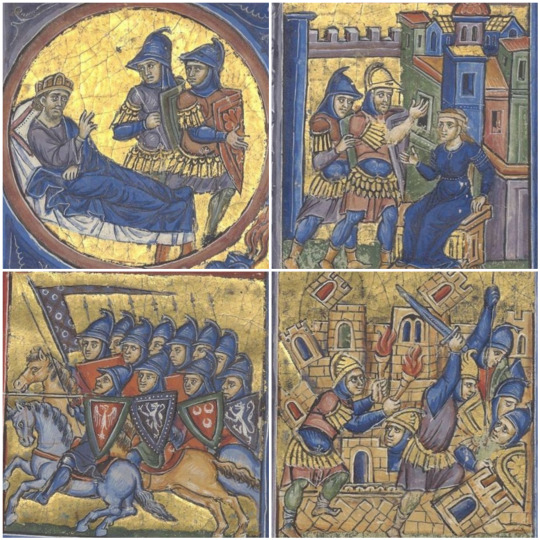
Another work commissioned by Louis IX, the Acre Bible was compiled shortly after the king’s release from captivity during the disastrous 7th crusade.
Upon returning to France, he deposited the masterwork in his newly built Sainte-Chapelle library.
It contains 19 books of the Old Testament, and its illustrations are considered masterpieces of crusader art.
6. The Aberdeen Bestiary, 12-13th century

A bestiary is essentially an encyclopedia of animals and mythical beasts.
They gained popularity throughout the Middle Ages as readers could learn about exotic animals or mythical creatures.
This one was owned by Henry VIII and features a retelling of the Genesis creation story with fantastical images of creatures both real and imagined.
7. The Very Rich Hours of the Duke of Berry, 15th century
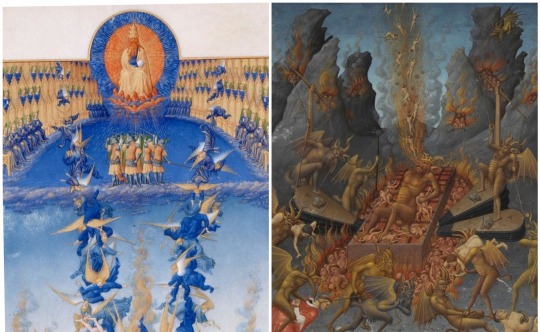
The best surviving example of the International Gothic style of illumination, it’s one of the most lavishly designed late-medieval manuscripts and contains well over 100 illustrations.
Despite beautiful scenes covering most of its pages, the work didn’t shy away from darker imagery.
8. The Berthold Sacramentary, 13th century

Commissioned by the abbot of Weingarten Abbey, this manuscript is a form of missal called a sacramentary used by priests for liturgical services.
A sacramentary gives the priest's readings and prayers for the Mass. This one is a paragon of Romanesque art.
#illuminated manuscripts#medieval manuscripts#medieval illumination#Middle Ages#medieval period#art history#books#handmade books#scribe#illuminator#The Morgan Crusader Bible#The Black Hours#Book of Kells#Codex Argenteus#Acre Bible#The Aberdeen Bestiary#The Very Rich Hours of the Duke of Berry#The Berthold Sacramentary#Wilhelm Vrelant#King Louis IX#medieval calligraphy#Theodoric the Great#bestiary#Henry VIII#Weingarten Abbey#sacramentary#missal
11 notes
·
View notes
Text
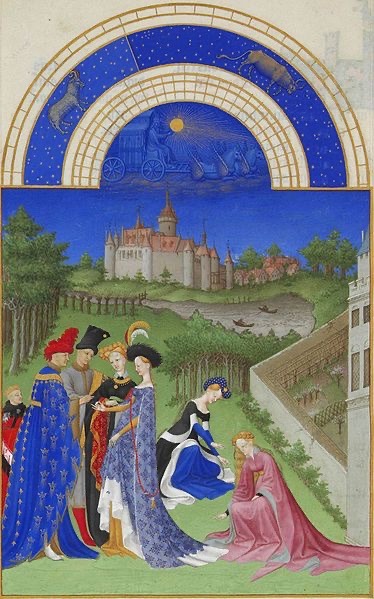
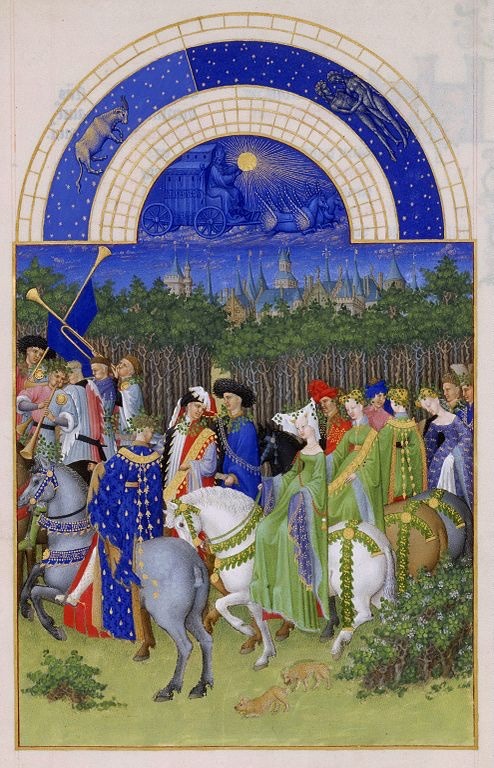
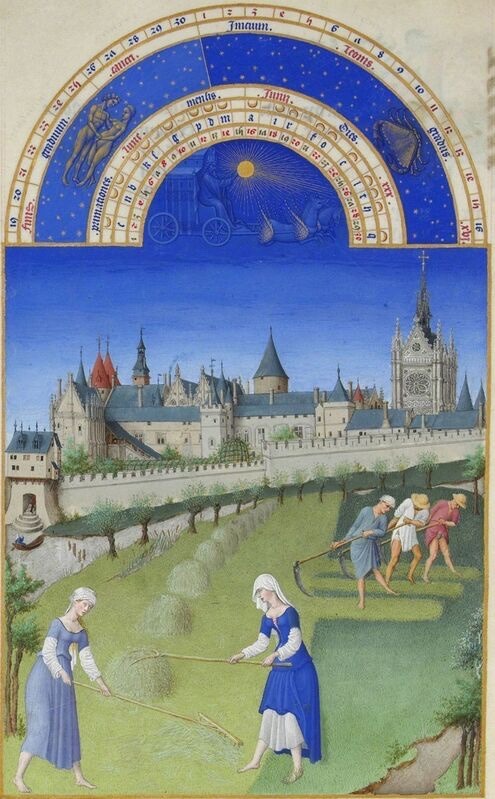
Medieval Zodiac Signs (April-June)
“Très Riches Heures du duc de Berry” or The Very Rich Hours of the Duke of Berry is the most famous example of an illuminated manuscript in the Gothic style because of its near perfect preservation. The book contains a collection of prayers for each month of the year. As seen in the top blue crescents, there are corresponding zodiac sign symbols.
April Slide 1: (Aries and Taurus)

May Slide 2: (Taurus and Gemini)

June Slide 3: (Gemini and Cancer)
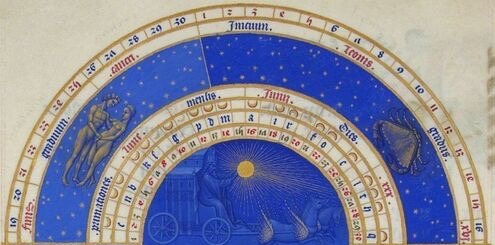
#art history#art#history#medieval#european art#animals#medieval art#christian art#middle ages#astrology#zodiac#zodiac signs#astrological art#gemini#aries#taurus#cancer
104 notes
·
View notes
Text

Limbourg brothers
Illumination from The Very Rich Hours of the Duke of Berry
c. 1412.-1416.
2 notes
·
View notes
Text

Crowd Scenes . 02 November 2024 . Très Riches Heures du Duc de Berry . Limbourg brothers Paul, Johan and Herman
The Très Riches Heures du Duc de Berry (French pronunciation: [tʁɛ ʁiʃz‿œʁ dy dyk də beʁi]; English: The Very Rich Hours of the Duke of Berry), or Très Riches Heures, is an illuminated manuscript that was created between c. 1412 and 1416. It is a book of hours, which is a Christian devotional book and a collection of prayers said at canonical hours. The manuscript was created for John, Duke of Berry, the brother of King Charles V of France, by Limbourg brothers Paul, Johan and Herman. The book is now MS 65 in the Musée Condé, Chantilly, France.
Consisting of a total of 206 leaves of very fine quality parchment,[2] 30 cm (12 in) in height by 21.5 cm (8+1⁄2 in) in width, the manuscript contains 66 large miniatures and 65 small. The design of the book, which is long and complex, has undergone many changes and reversals. Many artists contributed to its miniatures, calligraphy, initials, and marginal decorations, but determining their precise number and identity remains a matter of debate. Painted largely by artists from the Low Countries, often using rare and costly pigments and gold, and with an unusually large number of illustrations, the book is one of the most lavish late medieval illuminated manuscripts. The work was created in the late artistic phase of the International Gothic style.
0 notes
Text

Limbourg Brothers, The Month of July (1413-16)
#Paul limbourg#Très Riches Heures du Duc de Berry#the rustic painter#book of hours#illuminated manuscript#cancer#astrology#zodiac#art history#religious art#The Very Rich Hours of the Duke of Berry#15th century#my posts#limbourg brothers
56 notes
·
View notes
Photo

May by Limbourg brothers for Très Riches Heures du Duc de Berry (The Very Rich Hours of the Duke of Berry), c. 1412-1416.
•
Follow for more: Instagram (achasma.art) | Pinterest (achasmaart)
#Limbourg brothers#Très Riches Heures du Duc de Berry#The Very Rich Hours of the Duke of Berry#1400s#15th century#renaissance art#medieval art#manuscript#book illustration#medieval illustration
295 notes
·
View notes
Text

The Limbourg Brothers, January, The Very Rich Hours of the Duke of Berry, 1416
#the limbourg brothers#january#the very rich hours of the duke of berry#1400s#1410s#international gothic#manuscript illumination#musee conde
4 notes
·
View notes
Photo

9 notes
·
View notes
Photo

Full-bodied houppelandes with voluminous sleeves worn with elaborate headdresses are characteristic of the earlier 15th century. Detail from Très Riches Heures du Duc de Berry.
The Très Riches Heures du Duc de Berry or The Very Rich Hours of the Duke of Berry is the most famous and possibly the best surviving example of French Gothic manuscript illumination, showing the late International Gothic phase of the style.It is a book of hours: a collection of prayers to be said at the canonical hours. It was created between c. 1412 and 1416 for the extravagant royal bibliophile and patron John, Duke of Berry,
#art#illumination#15th century#the very rich hours of the duke of berry#manuscript#john duke of berry#french#gothic#old#fashion
2 notes
·
View notes
Photo
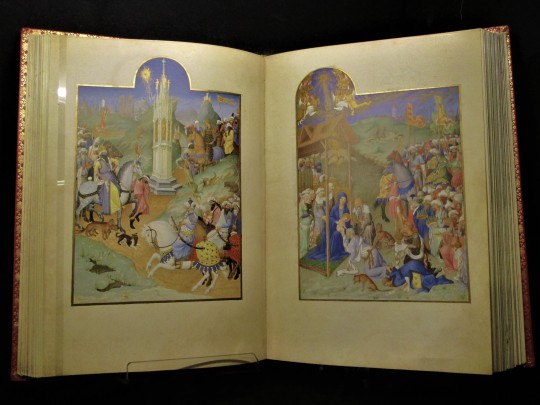
The Very Richly Decorated Hours of the Duke of Berry (Très Riches Heures du duc de Berry) is the most famous and admired masterpiece in the Château de Chantilly’s collection of books and manuscripts. It is a book of hours created between 1412 and 1416 by the brothers Herman, Paul, and Johan Limbourg, famous Dutch miniature painters from the city of Nijmegen. These pages show the Journey of the Magi, and the Adoration of the Magi.
#illuminated manuscript#international gothic style#medieval art#prayer book#Musee Conde#Chantilly#Oise#France
28 notes
·
View notes
Text










The very rich hours of the duke of Berry 1412–1416 Limbourg brothers (1385–1416)
#limbourg brothers#1410s#15th century#forest#rural#gothic#painting#genre painting#history painting#landscape#night#gold#untagged
12 notes
·
View notes
Photo






echoes throughout art history - BLUE
British Algae, Anna Atkins (1842) / Almond Blossoms, Vincent Van Gogh (1888) / Marine bleue. Effet de vague, Georges Lacombe (c.1893) / The Very Rich Hours of the Duke of Berry, Herman, Paul and Johan Limbourg (c.1415) / IBK 79, Yves Klein (1959) / Unfinished painting, Keith Haring (1989)
#painting#photography#art history#anna atkins#van gogh#georges lacombe#limbourg brothers#yves klein#keith haring#art parallels#blue#history of art
55 notes
·
View notes
Text



Medieval Zodiac Signs (January-March)
“Très Riches Heures du duc de Berry” or The Very Rich Hours of the Duke of Berry is the most famous example of an illuminated manuscript in the Gothic style because of its near perfect preservation. The book contains a collection of prayers for each month of the year. As seen in the top blue crescents, there are corresponding zodiac sign symbols.
Slide 1 (January): Capricorn and Aquarius

Slide 2 (February): Aquarius and Pisces

Slide 3 (March): Pisces and Aries

#art history#art#history#medieval#european art#animals#christian art#medieval art#illuminated manuscript#manuscript#zodiac#zodiac signs#astrology#capricorn#aquarius#pisces#aries
39 notes
·
View notes
Photo







Based on The Very Rich Hours of the Duke of Berry by the Limbourg brothers. Gif files were made as part of set design for the theater play.
1 note
·
View note
Text
Identity theory to the Black Cat knight in “Feast” - Part 2
There is one detail in “Feast” that has me almost upset because of my own short coming. Not because it’s badly written, out of nowhere or anything, quite the opposite, its brilliant! It’s the detail of the former cat miraculous holder, the knight
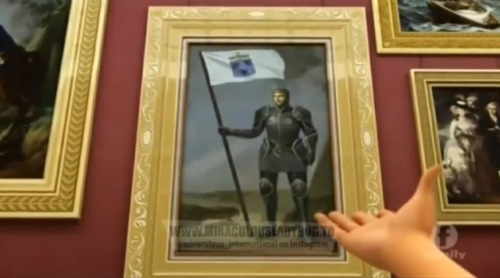
You know why this has me almost upset? I had this as serious theory since one evening I rewatched “Darkblade” and researched the historical background given there, since miraculous takes real life history and changes it to fit into their universe. The people and events are more or less accurate (as we know from episodes like “the pharaoh”). But I never completed the research nor did I made my theory into a post.
Well anyway. I guess it’s never to late to present my theory to who this former cat was.
Part 1: Who is the black knight? And the entire basis for the Theory
This is Part 2, here I will cover: The flag comparison is “Darkblade” and “Feast”
Part 3: Are the Cat Miraculous holder knight and Darkblade the same people?
Alright guys buckel up, it’s history time and these are gonna get LONG
Part 2: Comparison and Connections of the flags in “Darkblade” and ”Feast”
Its an incredibly interesting detail and I LOVE IT!
Just so we are all on the same page, the two flags I’m talking about are those two:
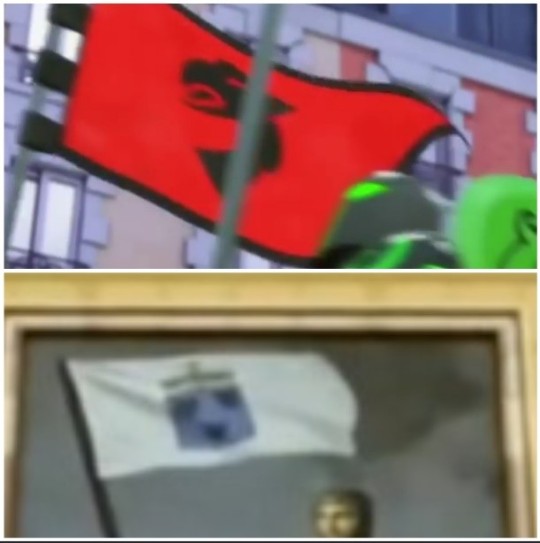
At first looking at these two flags made me think I hit a dead end because they dead ass look nothing alike. Of course I can just say “Oh I bet the flag from the portrait is the real life one and the Darkblade one is for the show and they included the real one as an history easter egg” but frankly I thought that would have been just a cop out way to present this theory.
So I went back to the research and would you look at that, if I’m correct with this then the Miraculous crew really did their history homework and “darkblade” reaches a new level of awesome episode for me.
To figure this out one character was of huge importance: Monsieur Armand D'Argencourt
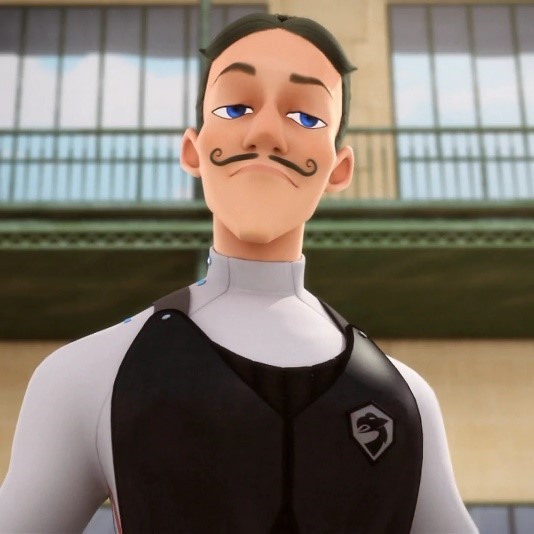
He is of such importance because not only in his episode “Darkblade” a crucial lore source for the later part of this theory, its also his design and ESPECIALLY his name that helped me aplenty finding my way through the research (But more to him in part 3).
Cuz you see, while researching Edward of Woodstock there was a name in the battle history between England and France, I didn’t paid much attention to at first. But then later when I wanted to look up Monsieur D'Argencourt’s ancestors story (Darkblade himself) given to us in the episode, the name “D'Argencourt” caught my eye immediately.
Because one of the biggest battles between the English and French for the control of France and also one of the most celebrated victories in English history was The Battle of Agincourt. D'Argencourt, Agincourt (in French Azincourt), you know where I’m coming from here. I will spare you the details of this battle because for the theory we’ll only need the flags used in the battle.
These are the flags the armies carried into the battle.
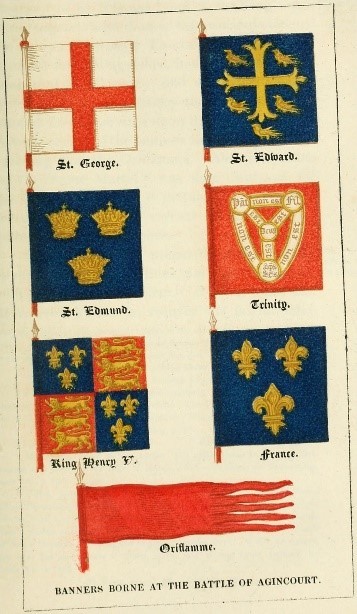
Comparing the Flag the Cat knight holds in the painting in “Feast” to these historical Flags here, I would say its quite save to say that Knight Noir is either carrying the Flag of “France” or “Saint Edmund”, though I’m strongly leaning towards “Saint Edmund”, the national Saint of England before getting replaced by Saint George, for context reasons.

Another thing that needs to be said here is that, yes, the flag doesn’t look 100% like the real one, but just like with the change of title from Prince to Knight in part 1, I’m not sure if the Miraculous crew would have even been allowed to use one of the actual flags of Saint Edmund in the first place. This is a difficult aspect to work into a show without offending anyone, especially when the real life historical figure you are connecting it with isn’t going to be portrait in a positive light the whole time.
Just like with the title and identity, what’s important here is that even though the flag isn’t historically right, for the people who know history the flag is still recognisable. I mean even I was able to pin point it to one of the saint Edmund flags and I’m not a history nerd so real historians will get it no doubt too. And for everyone else the not 100% correct flag isn’t doing any harm or did anyone notice it and felt cheated by it in “feast”? No? That’s what I thought.
Alight lets continue with Darkblades Flag
Once again just like Knight Noirs Flag, the flag from “Darkblade” also has a real life historical background even though this time its much more obvious and I’m sure a lot of people already noticed this.

The flag seen in “Darkblade” is quite obviously a slightly changed version of the flag that was for a long time the national Flag of England and would still be a part of it today if history hadn’t decided otherwise. Where things get interesting is that the English red flag with the white Dragon is once again a flag of Englands former national Saint Edmund. Unfortunately, to the history behind the flag I couldn’t find all too much to fact check but what I found out I will gladly explain. Please correct me though if I’m wrong and someone knows the actual reason.
Edmund was the King of East Anglia (England in todays language) from about 855. That is also why the Flag features a white Dragon. Two flags in England’s history featured a Dragon, one the Anglian with their white one and the Welsh’s red one. There is a great legend that comes with these two dragons and their connection to each other, check it out if you’re interested in stuff like this, its certainly worth a look. But here for this theory its only important that the white dragon flag originates from Anglia and then later the Dragon flag was resumed as Englands national flag when King Edmund became the Martyr and national Saint of England and therefore his/Anglias flag got used to represent and symbolize England.

So very interestingly, both flags shown to us in connection with a Black Knight (with one of them in universe confirmed to have been a former Cat Miraculous holder) are Flags of Saint Edmund. This not only gives us a geographical area but also a time frame to work with.
England, around the 14th - 15th century.
AND TO THE TIME FRAME the episode “Darkblade” also put in a cool Art easter egg comfirming it.
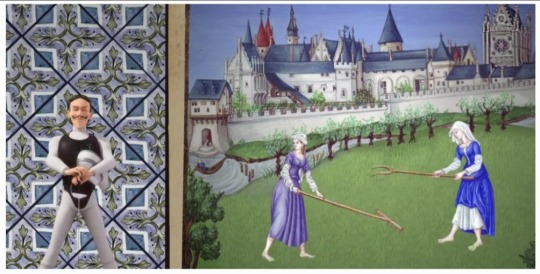
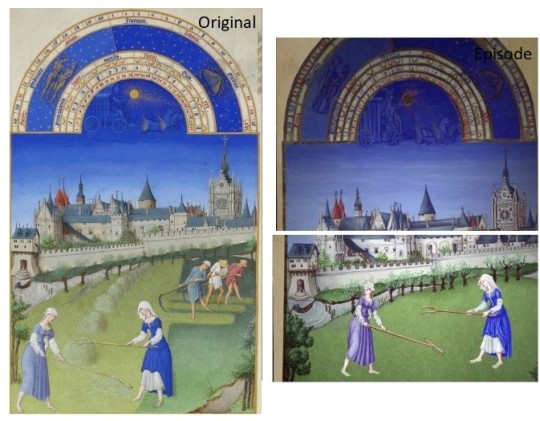
The real life illustration they use for Monsieurs D'Argencourt’s history monolog here is from the most famous and possibly the best surviving example of French Gothic manuscript illumination, “Très Riches Heures du Duc de Berry” (The Very Rich Hours of the Duke of Berry) created in, you guessed it, the 1400s (God I love details like this!)
But, well sure, all of this is nice and good, but the timeframe and the changes done to him still kinda leaves my original statement open to a default and that’s what I’ll cover next in Part 3: If Edward of Woodstock is the Black Cat Miraculous holder in the painting in “Feast”, is he also Monsieurs D'Argencourt ancestor Darkblade?
And back to Part 1: Who is the black knight? And the entire basis for the Theory
#Miraculous#miraculous ladybug#ml theory#past miraculous holders#former chat noir#ml feast#ml season 1#ml season 3#ml Darkblade#Cat miraculous holder in feast#Cat Noir#Chat Noir#guardians of the miraculous#ml spoilers
96 notes
·
View notes